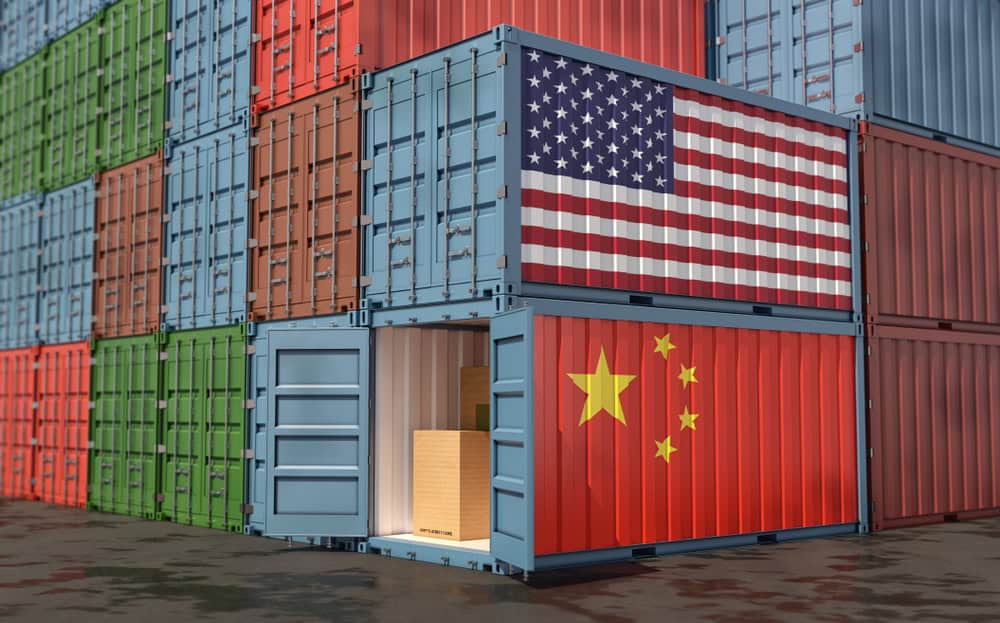- By TOP CHINA FREIGHT
- September 23, 2025
- Sea Freight, Shipping
Table of Contents
Sea freight rates from China to USA are a critical consideration for businesses involved in international trade. Understanding these rates and the factors that influence them is essential for optimizing logistics and controlling shipping costs. This guide explores the latest rates, compares shipping options, and provides actionable strategies to help you navigate the complexities of shipping goods efficiently and reliably.

What Are the Current Sea Freight Rates from China to the USA?
As of 2025, sea freight rates have experienced significant fluctuations due to various global factors. The average rates are as follows:
| Container Type | Average Rate |
|---|---|
| 20ft FCL (Full Container Load) | $1,800 – $2,800 |
| 40ft FCL | $2,500 – $4,200 |
| LCL (Less than Container Load) | $50 – $80 per cubic meter |
| Air Freight (100kg+) | ~$6.5 per kilogram |
These rates are subject to change based on fuel prices, port congestion, and seasonal demand.
How Do Shipping Routes Affect Freight Costs?
The choice of shipping route plays a pivotal role in determining freight costs. Routes to the U.S. West Coast, such as Los Angeles and Long Beach, typically offer shorter transit times but may experience higher congestion. Conversely, East Coast ports like New York and Savannah might have longer transit times but can offer cost advantages depending on shipment specifics.
For example, spot rates for containers from Asia to the U.S. West Coast have recently declined due to surplus capacity and shifting trade patterns. Selecting the most efficient and cost-effective route is critical for managing total shipping expenses.
What Affects Shipping Costs from China to India?
The choice of shipping route plays a pivotal role in determining freight costs. Routes to the U.S. West Coast, such as Los Angeles and Long Beach, typically offer shorter transit times but may experience higher congestion. Conversely, East Coast ports like New York and Savannah might have longer transit times but can offer cost advantages depending on shipment specifics.
For example, spot rates for containers from Asia to the U.S. West Coast have recently declined due to surplus capacity and shifting trade patterns. Selecting the most efficient and cost-effective route is critical for managing total shipping expenses.
What Are the Key Factors Influencing Sea Freight Rates?
Several factors contribute to the variability of sea freight rates:
1.Fuel Prices:
Changes in global oil prices affect carrier operating costs.
2.Port Congestion:
High traffic can lead to delays and additional demurrage fees.
3.Seasonal Demand:
Holidays and peak seasons impact availability and rates.
4.Trade Policies:
Tariffs and regulatory changes can increase or reduce costs.
5.Carrier Capacity:
Vessel availability influences pricing and scheduling.
Understanding these factors helps businesses anticipate changes and plan shipments effectively.
How Can Businesses Optimize Their Shipping Costs?
Combining smaller shipments into full containers reduces per-unit costs.
Efficient pallet sizes maximize container space.
Long-term relationships often secure better rates.
Early bookings avoid peak-season surcharges.
Alternative ports and routes may offer cost advantages.
What Are the Advantages and Disadvantages of Different Shipping Methods?
| Shipping Method | Pros | Cons |
|---|---|---|
| Sea Freight (FCL) | Cost-effective for large shipments, reliable schedules | Longer transit times, port congestion possible |
| Sea Freight (LCL) | Flexible for small shipments | Higher per-unit costs, potential delays |
| Air Freight | Fast transit, ideal for urgent shipments | High costs, limited capacity |
| Rail Freight | Moderate transit times, cost-effective for specific routes | Limited availability, infrastructure constraints |
Selecting the appropriate method depends on shipment size, urgency, and budget.
How Do Customs Regulations Impact Shipping Costs?
Customs procedures add complexity and potential costs. Delays in clearance can result in extra fees. Ensuring that all documentation—such as bills of lading, commercial invoices, packing lists, and certificates of origin—is accurate is essential for smooth processing. Staying informed about customs regulations and pre-clearing documentation can reduce delays and unexpected charges.
What Are the Latest Trends in Sea Freight Rates from China to the USA?
Reductions in certain tariffs have increased shipping volumes and affected rates.
Shipping companies adjust vessel capacities based on demand patterns.
Surplus capacity and shifting trade routes contribute to rate declines.
Case Study: Optimizing Shipping Costs for an E-Commerce Business

A California-based e-commerce company faced rising shipping costs and delays. They implemented the following strategies:
- Consolidated smaller shipments into full containers.
- Optimized packaging with standardized pallet sizes.
- Negotiated long-term contracts with freight forwarders.
- Explored alternative ports and shipping routes.
Result: Shipping costs decreased by 20% and delivery times improved by 15%. Operational improvements proved more effective than rate shopping alone.
How Seasonal Demand and Peak Periods Affect Rates
Conclusion
Understanding sea freight rates from China to the USA involves analyzing multiple factors, including container type, shipping routes, fuel prices, and customs regulations. By staying informed, implementing operational strategies, and selecting appropriate shipping methods, businesses can optimize logistics, reduce costs, and improve supply chain efficiency.
Need a Shipping Quote?
If you want expert guidance and peace of mind, our team is ready to assist.
TJ China Freight offers tailored solutions to help businesses of all sizes ship more reliably from China.

FAQ
Q1:What is the average sea freight rate from China to the USA in 2025?
The average rate for a 40ft FCL container ranges from $2,500 to $4,200; LCL rates are $50–$80 per cubic meter.
Q2:How do fuel prices affect sea freight rates?
Fluctuations in oil prices influence carrier costs and result in rate adjustments.
Q3:What are the benefits of consolidating shipments?
Combining smaller shipments into full containers reduces per-unit costs and improves efficiency.
Q4:How can I stay updated on shipping regulations?
Consult industry news, freight forwarders, and customs updates regularly.
Q5:What is the typical transit time for sea freight from China to the USA?
Transit times range from 15 to 35 days depending on the port and route.
